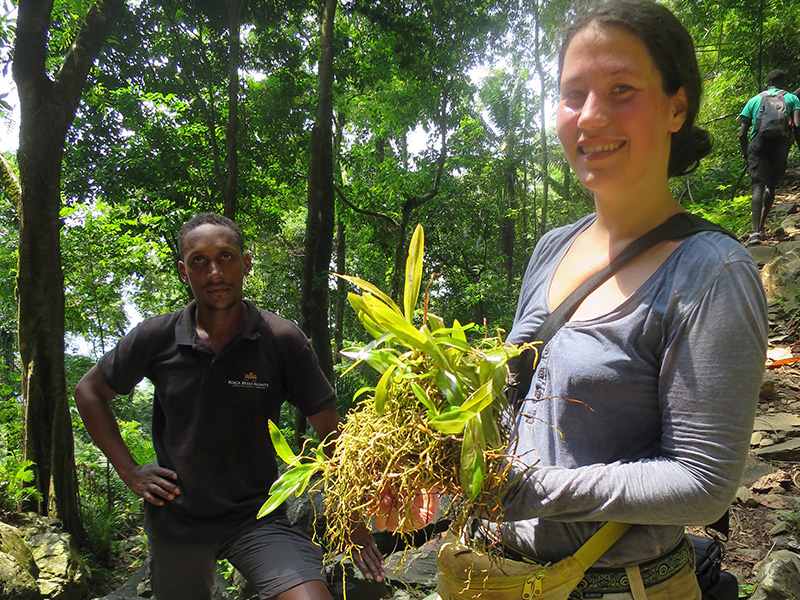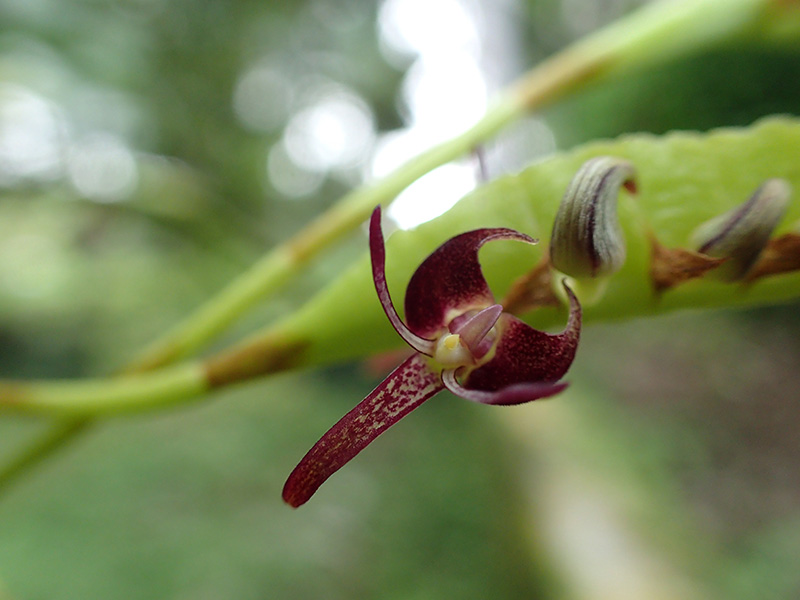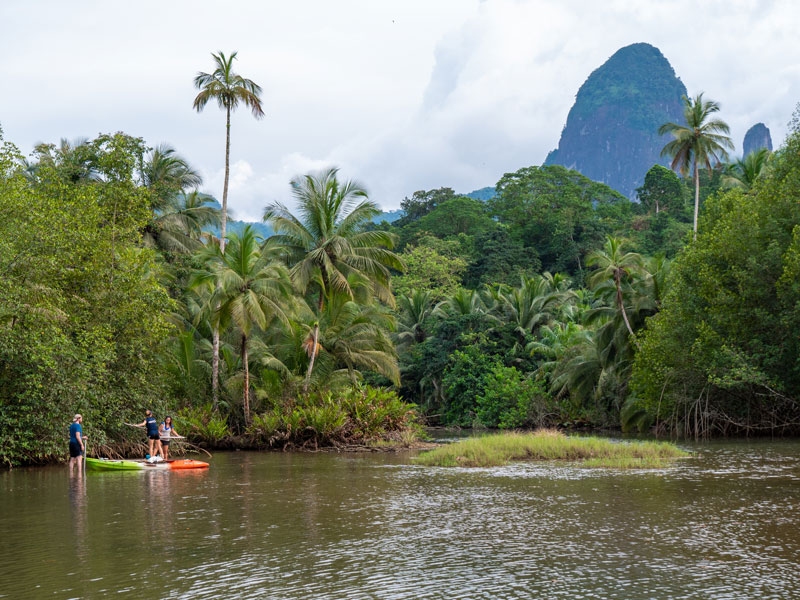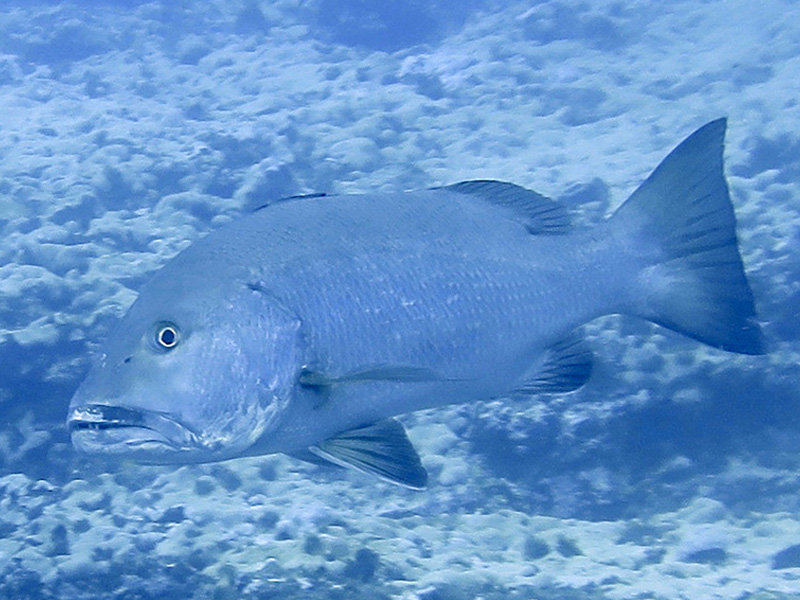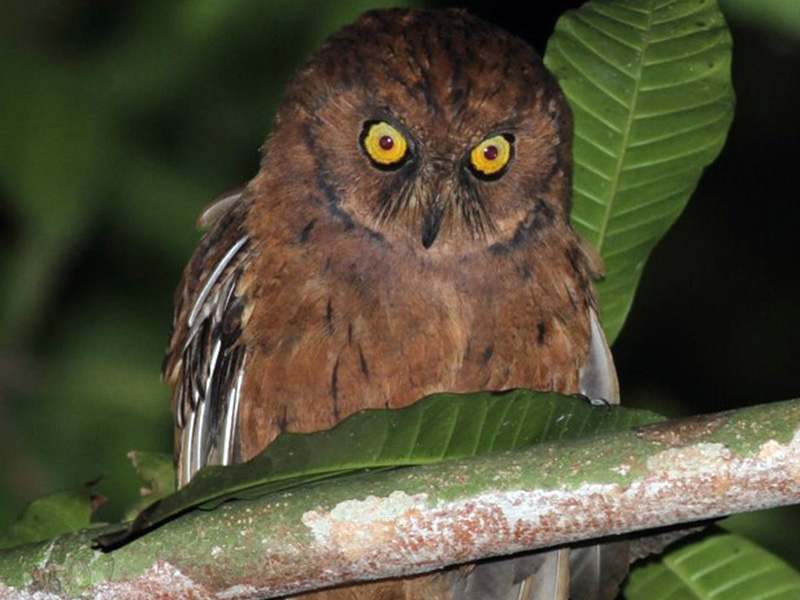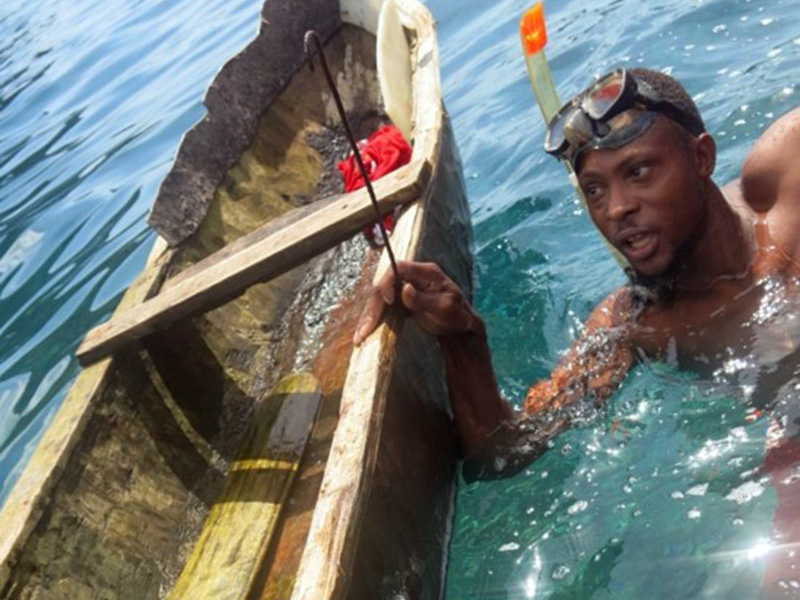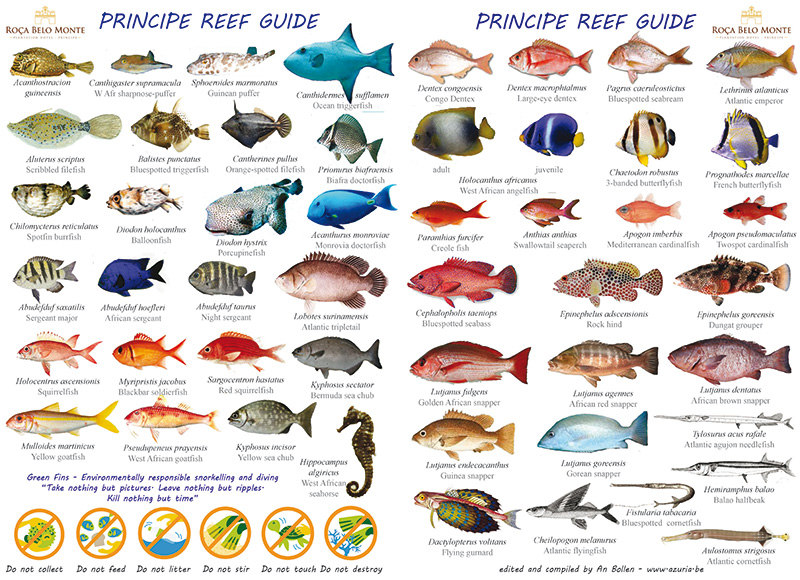Context: São Tomé and Príncipe have a high diversity of orchid species with 129 taxa of which 101 present in São Tomé and 64 in Príncipe, including 35 endemic species. The plant family of the Orchidaceae is one of the two largest families in the floral realm with more than 25,000 species and 700 genera. They are also one of the most fascinating groups of plant for the general public. Orchids are a cosmopolitan family but the vast majority occurs in the tropics. In terms of species number and abundance, it is the most important plant family on São Tomé and Príncipe, with the highest endemicity level. During a 2017 botanical training and expedition of FPT-MBG, Diaphananthe principensis sp. nov ined., a large new orchid species endemic to Príncipe, was collected.
Most orchid species on Príncipe can be found in an area of 50km2 in the Southern part of the island. 76% of the São Tomé and Príncipe orchids are ephiphytes, living on other trees, most others grow on soil and only a few attach their roots on rocks. The challenge studying orchids is that they are often hard to document and sample since they are most often encountered in sterile condition, making species identification impossible. To overcome these obstacles, a shadehouse cultivation system can be used to obtain fertile, identifiable material of orchid taxa. This system has been adopted previously in São Tomé and has proved to be an efficient and cost-effective sampling procedure for epiphytes, yielding high quality alcohol preserved specimens, photos and leaf tissue for phylogenetic analyses. This method is successful for conducting thorough inventories of targeted areas and allows to identify and describe species without taking whole specimens from the wild.
In addition to the contribution to the ex situ conservation, the cultivation of rare and endangered orchid in shadehouses or orchidarium also serve as a living museum where orchid species can be shown to the public. Orchids appeal to many people for their elegance, diversity and even fragrance. Most touristic websites and travel agencies cite them in their description of the islands, but given the rugged terrain, to actually see most species in the wild is hard. This system allows bringing unique biodiversity to visiting tourists while facilitating research and promoting conservation.
Aim: Conservation of Príncipe’s orchids, with a special focus on the endemic and threatened species
Methods: Construction of an orchid shadehouse at Belo Monte. Collection of orchid specimens in the wild in different areas to ensure good diversity, mounting them in the shadehouse. Training of 2-3 local staff on orchid care, propagation, taking samples, photography of flower structures and keeping records on their phenology.
Expected output:
- Orchid collection and display in established shadehouse on Belo Monte grounds
- Advanced research on species inventory and identification
- Ex situ conservation of endemic and threatened orchids of Príncipe
Collaboration:
- Parque Natural do Príncipe (also has a small orchidarium)
- Tariq Stévart, Missouri Botanical Garden
- Tania D’haijère, Université Libre de Bruxelles


